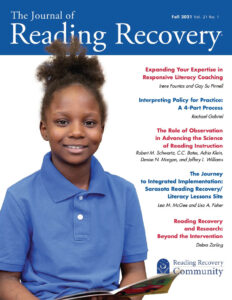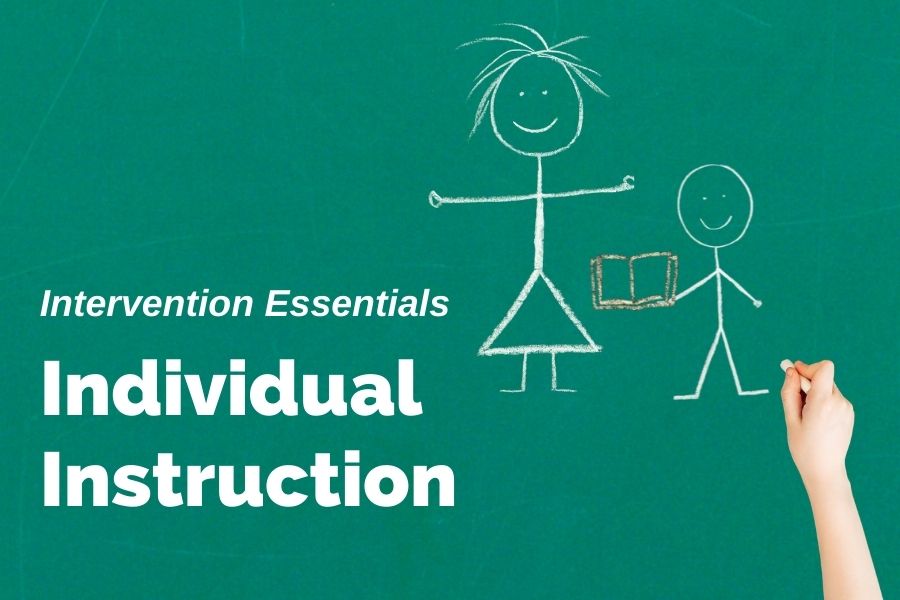BLOG
Intervention Essentials #3: Full Implementation Maximizes Effectiveness
by Dr. Anne Simpson, Texas Woman’s University
Why does full implementation in Reading Recovery® matter?
The goal of Reading Recovery and Descubriendo la Lectura—Reading Recovery in Spanish—is to efficiently and effectively lift the literacy achievement of children who are experiencing difficulties learning to read and write. School systems that choose to implement the interventions do so with the understanding that reducing the number of first graders who have extreme difficulty learning to read and write not only sets students on the path for success in literacy learning but also benefits the total school as well. Full implementation is essential for maximizing the effectiveness.
What is Full Implementation?
Full implementation, sometimes referred to as full coverage, means that every child who needs Reading Recovery services has access to the intervention at their school during first grade. Children making low progress in learning to read need to make accelerated growth by increasing their rate of progress relative to the expected growth by the end of first grade in order to close the achievement gap. “A school or district has reached full coverage or full implementation when sufficient time and teacher support is available to serve all identified children (RRCNA, 2021, p. 31).
What are the Benefits of Full Implementation?
Students, teachers, and schools benefit from full implementation of the one-to-one intervention that significantly lifts the literacy achievement for each student who receives the intervention. Students develop systems for independent problem solving, often achieving several months of growth in just a few weeks of their daily, individually designed lesson series. Students who make this accelerated progress seldom need referral for long-term interventions, thus reducing costs associated with remedial instruction and referrals to special education. In addition, reducing unnecessary referrals to special education frees time for special education educators to focus their attention on those students who truly need those services. Reading Recovery teachers identify and work with each learner’s strengths and design lessons to support the student making accelerated progress. The focus on a strength-based intervention and teacher expertise lead to a positive and productive learning culture for the whole school. Working from a theory that emphasizes teaching for independence and thoughtful analysis of teaching decisions, schools create a culture of what Fullan & Quinn (2016) refer to as “coherence making.” Schools that operate with coherence build capacity for purposeful action and interaction, building precision in teaching and accountability. The added benefit of full implementation includes the highly trained teachers who share their early literacy expertise to grow collaborative cultures and deepen learning within the total school. While it may take 2–3 years to achieve full implementation, planning for full implementation is an important goal in lifting achievement to within the average band of all readers and writers and reducing the number of referrals to special education or retentions in first grade.
How to Plan for Full Implementation
Reading Recovery’s unique system for lifting individual students’ literacy achievement in first grade requires school leaders to think both about student needs on a campus (across a district) and staffing flexibility to achieve full implementation.
Student Need
To determine the appropriate level of support, teachers typically begin by identifying 20–25% of their first-graders making the lowest progress on their district early literacy performance indicators (Clay, 2005). Reading Recovery teachers then administer An Observation Survey of Early Literacy Achievement (Clay, 2019) to determine the children most in need of Reading Recovery instruction. Classroom teachers and the Reading Recovery teacher or a literacy team work together to determine the students most in need and begin by taking the lowest-performing students. By annually being attentive to changes in demographics, changes in performance standards, and changes due to growth, school teams can anticipate the number of teachers who are needed to provide Reading Recovery instruction for all students who need it.
Flexible Staffing
Reading Recovery teachers typically serve four students individually in daily lessons for 12–20 weeks (determined by the learner’s progress). The short intensive individual instruction allows teachers to serve between 8–10 students across the school year. Because Reading Recovery instruction is only part of the teacher’s day (typically a .4 FTE), this teacher may use their expertise in a variety of roles within a school during the other part of the day. Flexible staffing models include shared classroom models, English language [EL] services, small-group interventions across other grade levels, literacy coaches, or special education services (RRCNA, 2021).
These flexible staffing models enable schools to achieve full implementation. When a school is fully implemented and all first-grade children who qualify for the intervention have been served by the end of the year, teachers are able to work with kindergarten children or some second-grade students who may have moved in the district or need additional support.
An Example
In a school with four first-grade classrooms, each with 22 students, a school team could anticipate that 17–20 students would benefit from Reading Recovery. To achieve full implementation, the school would need two, possibly three, teachers depending on the makeup of the campus. These two teachers would be able to have 8–10 students in their first 12–20 weeks of instruction and potentially 8–10 students in their second 12–20 weeks of instruction. Teaching for acceleration and efficient entry and exit processes will contribute to the efficiency of the implementation. Close collaboration with the classroom teachers maximizes the successful transition into classroom instruction so that the child can learn with independence.
Full Implementation Achieved
Full implementation is part of a school and district’s comprehensive literacy plan. Striving to achieve full implementation in schools requires dynamic planning annually to anticipate change in student need and teacher availability. Campus leaders, teacher leaders, site coordinators, and teachers can establish systems for annually reviewing outcomes and anticipating future needs. A commitment to full implementation ensures that children most in need are able to make significant growth in their literacy learning. In addition, the commitment to full implementation reduces the long-term costs of intervening services to educational systems. Full implementation is both a process and a goal in maximizing students’ early literacy success.
“Intervention Essentials” is a three-part series featured in the Fall 2021 edition of The Journal of Reading Recovery. View and print a copy of Part 3: Full Implementation Maximizes Effectiveness and subscribe to the blog for future releases.
Interested in full access to The Journal of Reading Recovery? Learn more about becoming a member of RRCNA.
References
Clay, M. M. (2005). Literacy lessons designed for individuals part one: Why? when? and how? Heinemann.
Clay, M. M. (2019). An observation survey of early literacy achievement (4th ed.). Global Education Systems (GES) Ltd.
Fullan, M., & Quinn, J. (2016). Coherence: The right drivers in action for schools, districts, and systems. Corwin.
Reading Recovery Council of North America. (n.d.). Effective implementation. https://readingrecovery.org/ reading-recovery/implementation/ effective-implementation/
Reading Recovery Council of North America. (2021). A site coordinator’s guide to the effective implementation of Reading Recovery (2nd ed.)
About the Author
Dr. Anne Simpson is a professor emeritus at Texas Woman’s University, where she was director of Reading Recovery and Descubriendo la Lectura. She is a Reading Recovery trainer emeritus with the North American Trainers Group.
THE JOURNAL OF READING RECOVERY
Spring 2025
OPEN ACCESS: Centering Children and Working Towards Equity: Teaching All Children to Read by Catherine Compton-Lilly
Literacy Leadership in Support of Equity: Whatever It Takes by Allison Briceño
Exploring the Purposes, Power, and Potential of Familiar Reading by Jamie Lipp
Full Circle: From Student to Psychologist by Joyce Romano





